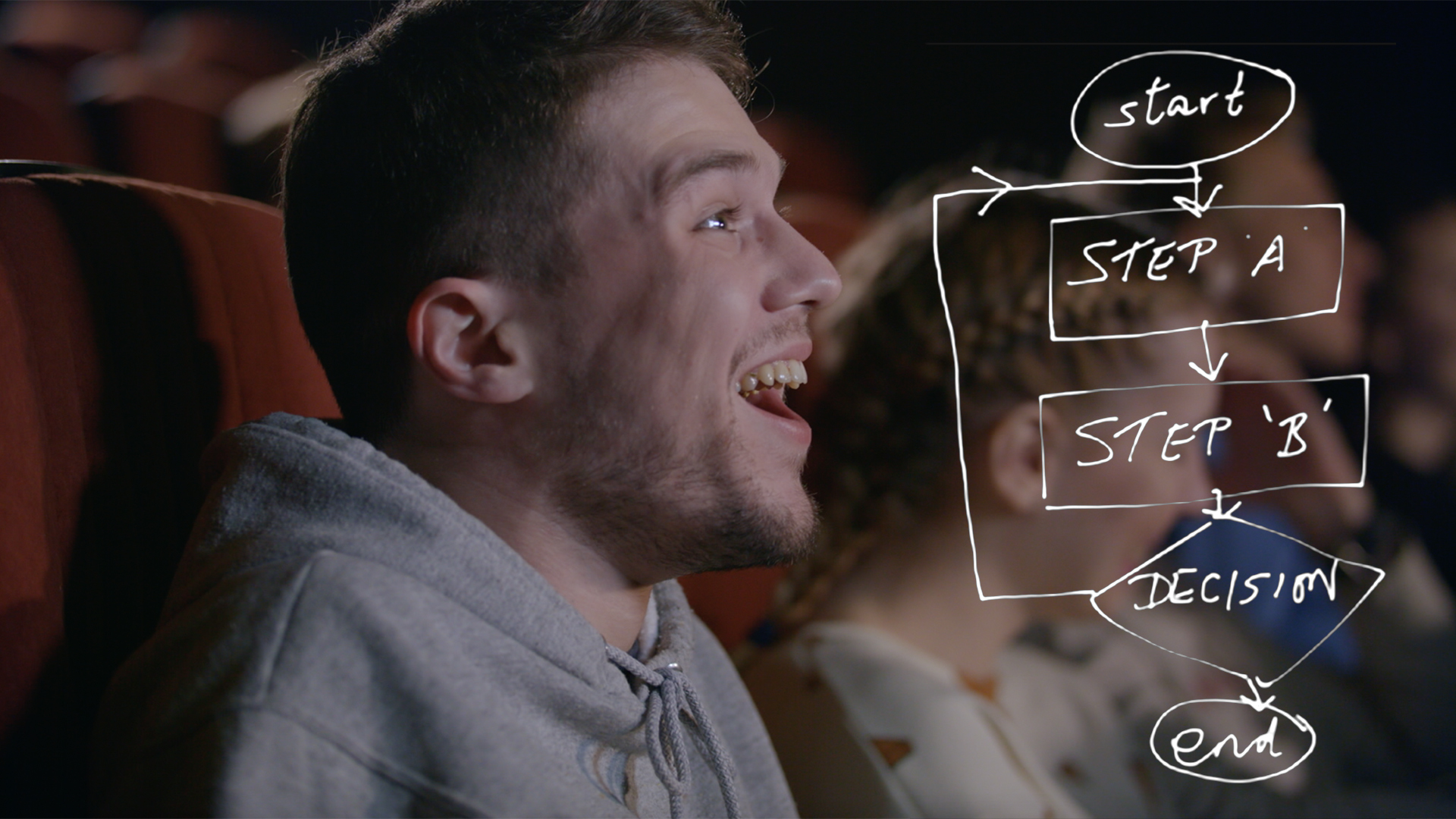Probably the most common request we’re hearing from clients at the moment is: can you help us to be better content makers? Us is the talented bunch of in-house marketers that we co-create with every day. And our answer is always the same – yes we can. Nothing we do is magic, and almost none of it is innate. We’ve learned our craft (the learning is never over – which is cool) and you can learn it too. So we’re producing a short series of ‘101-style’ articles to help you be a more confident and creative content maker. This is # 1: Understanding an audience.
The single biggest favour you can do yourself if you want to be a better content maker, is to understand your audience. It all starts there.
Watching standups
A few years back I saw Sarah Kendall presenting a work in progress at the Wells Comedy Festival. Billed as a big festival in the UK’s smallest city, some comedians try out material on the way to the prestigious Edinburgh event. The venue was tiny, there was no stage, and she was reading a selection of stories from a sheaf of papers. You could see her listening for where the laughs were, and where the silences fell. At what points was the audience gripped? Were there places where our attention drifted off? She was reading and marking up the scripts, speaking aloud but listening hard to our reactions. Not focused on delivering a polished performance, instead you could see her tightening up the material in front of your eyes.
A little later I saw her doing another read through of the same stories, at the Wardrobe Theatre in Bristol. The stories were smoother and pacier. Some details changed, descriptions more vivid, drama heightened, one-liners snappier. Finally, a month or two later, I heard her reading the story on BBC Radio 4. Same material, but tighter again, its structure and delivery honed by repeated deliveries and rewriting for her audience.
The festival of you
The success of your storytelling – for content marketing, social or PR – all depends on how it lands with its audience. If anything, your audience is even tougher, more critical and fickle than a standup’s – who at least knows theirs has chosen to suffer.
If dying on stage is not your kind of fun – it ain’t ours – then take inspiration from Sarah Kendall’s thorough (and self-compassionate) approach to better storytelling. And if there is no Festival of Marketing and PR Campaigns where you get to test drive and rewrite ideas in front of a friendly and fascinated audience, then you’ll get along just fine with the festival of you.
How to understand an audience | in 5 takeaways
Narrow your focus | Thinking of an audience as a huge group of anonymous faces will make your ideas shrivel. Trying to please everybody is a surefire way to please nobody – it’s a fast track to bland. It really helps if you can get to know the people you hope to meet through your stories. At this point you might be thinking – ah, yes, personas. Well, yes, kinda. We’ve seen personas that go: Jane Appleseed is a CFO, around 40 years of age, background in private equity, shops in John Lewis, mission is sustainable growth. Which is a good start on segmenting an audience in MailChimp or whatever, but lacks the insight and specificity you’re going to need to create a great piece of cut-thru content.
Tip: When you get down to creating content – say writing a blog – having one person in mind when you write will help you to create something that connects. But which one person should you think of?
So, do the research | Conversations with a handful of people (between 5 and 25) that represent your audience is invaluable for getting beyond the superficiality of the Jane Appleseeds, to understand their thinking, how they feel, and what they care about. These are detailed conversations with relevant people: CIOs, CFOs, CMOs representative of the people you market to, from existing customers and ideally from the broader community of collaborators and suppliers as well. You will get powerful insights into what your wider audience wants to hear. Record them and transcribe them – it’s marketing gold dust. There is usually a very useful level of crossover between the calls, with the key points in a narrative being underlined and highlighted by different speakers.
We’d like to make the case here for our Discover service if you’d like to invest in the process we’ve just described, but want some assured outcomes. At the end of a good Discover project, your stories start telling themselves.
Tip: What if you pick the wrong interviewees? People who are not representative of your target audience? It’s a risk, but one that you mitigate by doing a diverse group of calls, not just one or two. In our experience, research calls are rarely ever wasted. If a batch of feedback is wildly different from what you were expecting it’s usually a sign that you need to look again at what you’re delivering. It’s all good data.
Understand their world | So what are you digging for in the calls? It depends on your organisation, and your goals, but broadly speaking you’re looking to uncover what really matters to your audience and how they see the world. What global narratives are important to them? Maybe it’s the state of the economy, or sustainability, or the future of work. What are their hopes and dreams? What’s standing in the way of achieving them, and where do you fit into the picture?
We have a questionnaire that we can share with you to help in this process.
Tip: Later, you’re going to want to connect your stories with some of these bigger narratives to make them more topical, interesting and relevant. Just like a standup would.
Figure out the questions they keep coming back to | This is right at the heart of the process. A standup will want to make you laugh at the things that move you most deeply. The scary things, the joyful things, the obsessions and the achievements. Follow the same route. What specifically don’t they understand? What keeps them awake at night? What earns them plaudits and promotions?
Tip: Your best content will demystify, reframe, reflect, those careabouts. Sometimes, the greatest gift is helping the reader to ask a better question – one that moves their project or agenda forward.
Get the words exactly right | Just like a comedian who’s listening to hear whether ‘dachshund’ is funnier than ‘pug’ or vice-versa, there’s real power in picking exactly the right words for your audience. When it comes to marketing communications the right word will be the one that your audience would use themselves. The words that sound like the thoughts running through their heads have the most power, as they’re the ones that will make them feel seen and understood.
And how do you know which words they use? Simple – you listen. It’s another reason why the discovery process is so valuable. Not only do you get insights into the narratives that resonate with an audience, but you also collate a lovely big lexicon of words and phrases that the people you care about use to describe their world.
Tip: If you’re writing sales copy, knowing the words your audience uses to talk about their challenges, joys, frustrations, and desires is a gift. Much more impactful than dry old features and benefits. The actual words your audience uses is a palette you can use to create a tone of voice that sounds authentic and empathetic.
And finally
Marketing automation platforms produce a wealth of data which is highly valuable, giving all of us 20:20 hindsight. If your content did ‘die on stage’, then that’s the toolset for a rapid postmortem. But never, ever, in the history of digital marketing did one of those corpses sit up, and sign up for a webinar. It’s way better to do the hindsight up front.






What do you think?